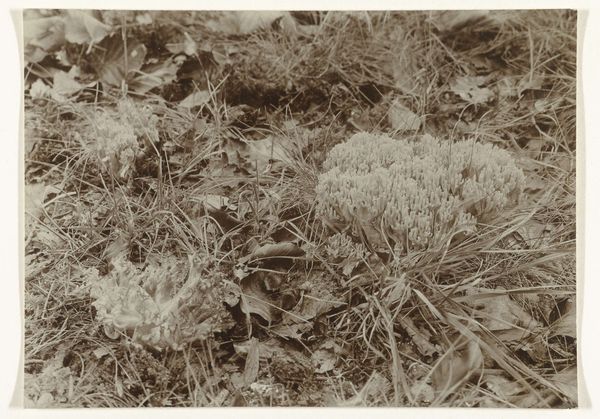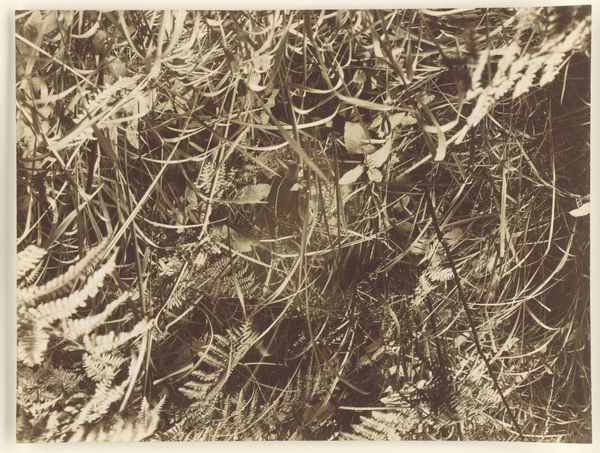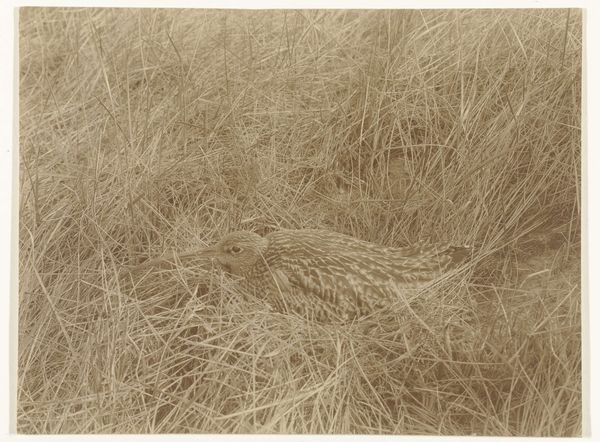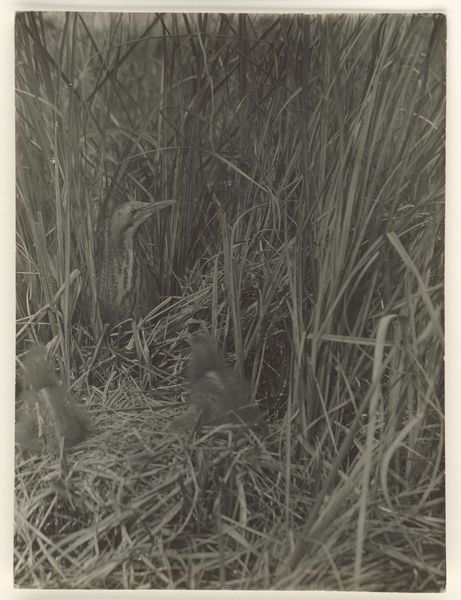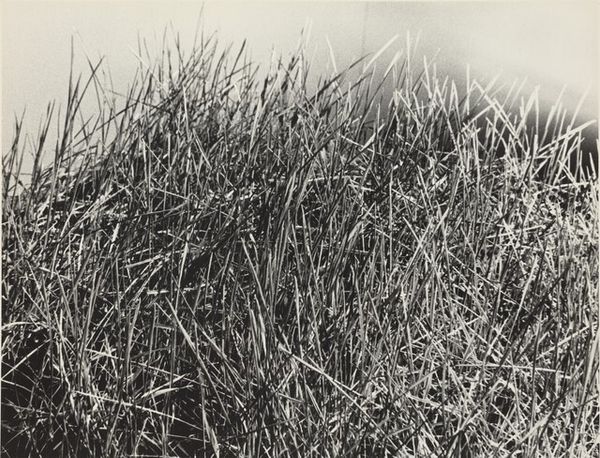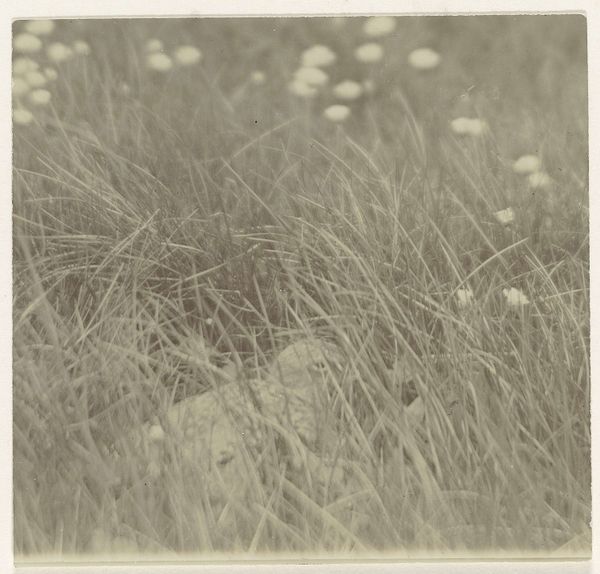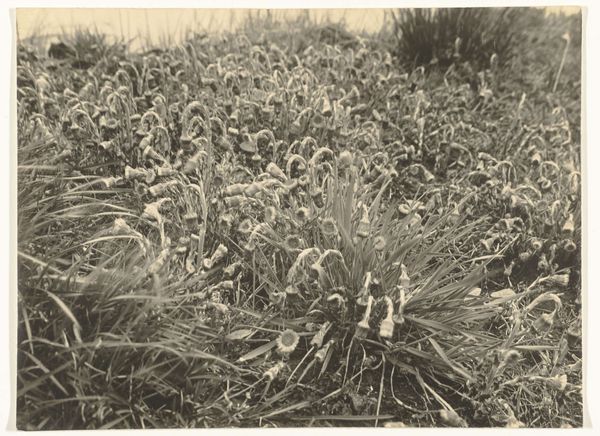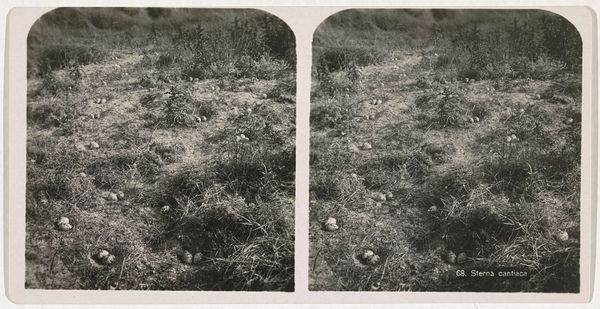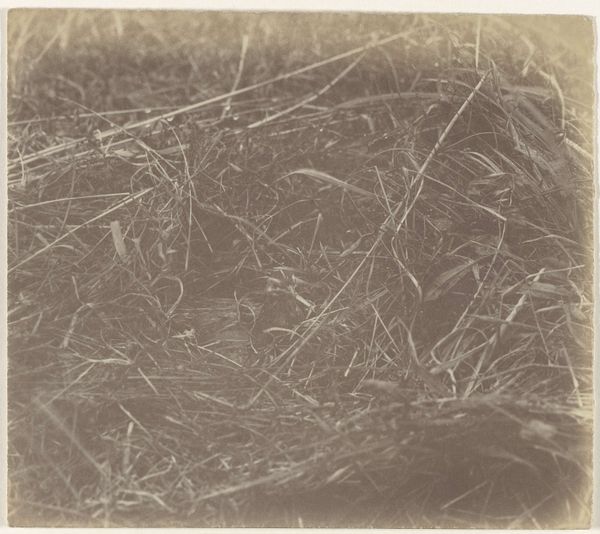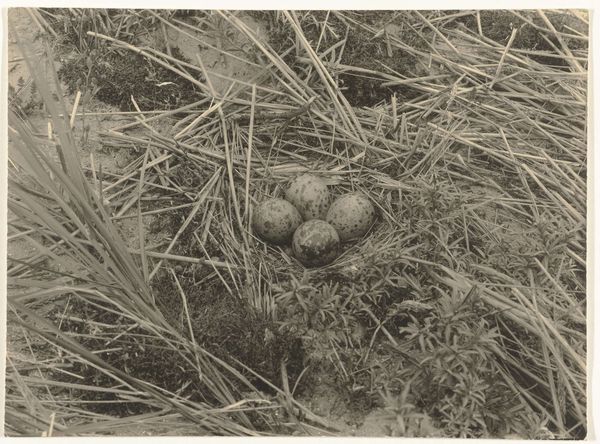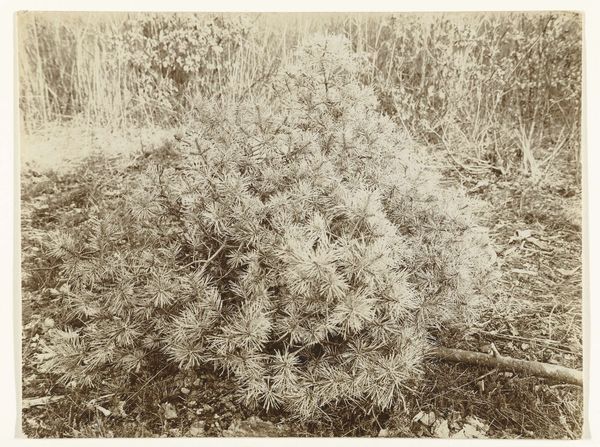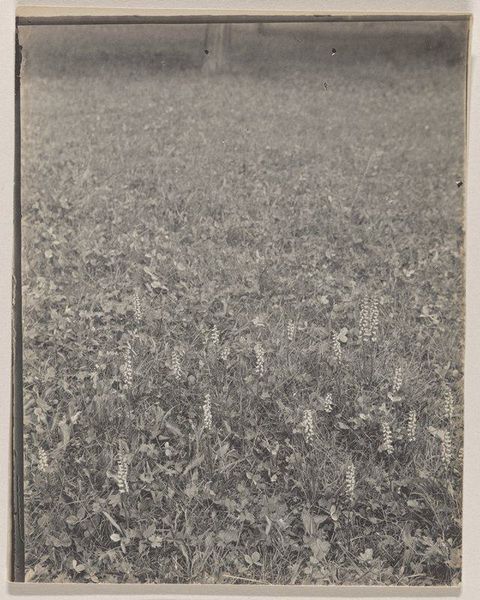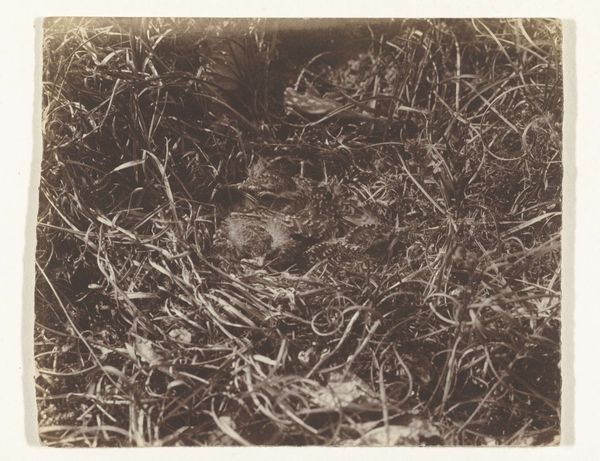
print, photography
#
organic
#
organic
#
natural photography
#
pictorialism
# print
#
organic shape
#
landscape
#
nature
#
photography
#
nature
#
realism
Dimensions: height 158 mm, width 227 mm
Copyright: Rijks Museum: Open Domain
Curator: Nestled within our collection here at the Rijksmuseum is Richard Tepe’s photograph, "Eksternest in doornentakken bij het Naardermeer," which roughly translates to “Magpie's Nest in Thorny Branches near the Naardermeer." The photograph, a print in the Pictorialist style, was likely created sometime between 1900 and 1940. Editor: Right away, I’m drawn to this sense of both vulnerability and resilience, this fragile nest of interwoven thorny branches... I keep thinking of fairy tales. What secrets might that tangled space be holding? Curator: Tepe was known for his landscapes, and you can certainly see that pictorialist influence in this piece; it almost has a painterly quality. It's not just a straightforward snapshot. Editor: Exactly. It feels deliberately composed. There's a softness to it, almost dreamy. The limited tonal range really pushes the nest into center focus; it's all subtle suggestion and shadow play. Did he manipulate the print at all, do we know? Curator: The techniques employed by pictorialist photographers like Tepe often involved manipulating the negative or the printing process. It wouldn't surprise me if he used techniques to soften the focus or add tonal effects to create a more artistic feel. It's this striving for an artistic vision that defined the pictorialist movement, a rebellion, in a way, against purely documentary photography. Editor: It almost looks like the branches are embracing this little haven… like nature itself is guarding its hidden things. Makes you consider our own relationship with nature; a prickly yet beautiful one, intertwined, full of life… but a bit dangerous to touch. Curator: I find myself contemplating how representations of nature are used for very specific purposes and meanings. And who decides those purposes and meanings; institutions like the museum have agency there, too. It makes me consider, what does nature "mean" now versus what did it mean when Tepe took this image? Editor: Hmmm... well, for me, Tepe's photograph remains a captivating meditation. I see something about nature's tenacity – how it claims its space, stubbornly, beautifully. Curator: Indeed. This artwork presents a really great window onto ideas of conservation and protection as well. Thank you.
Comments
No comments
Be the first to comment and join the conversation on the ultimate creative platform.
